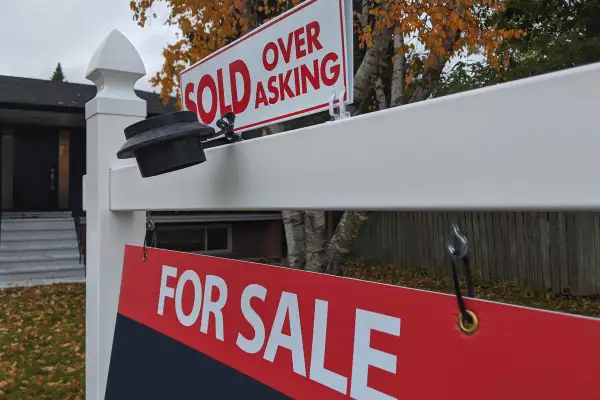This One Stat Shows Just How Hard It Is to Buy a House in 2022

It’s been a brutal year for homebuyers. A combination of surging demand and a persistent shortage of inventory has heightened competition and led to double-digit price growth.
Here’s one number that sums up the challenges buyers have been facing: In 2022, 48% of homes for sale received three or more offers, according to data from Zillow’s new Consumer Housing Trends Report. Things weren't much better during the hot house-buying days of 2021, when 40% of homes for sale received three or more bids.
By contrast, in 2018 and 2019, before the pandemic housing boom, only 29% of homes for sale in each year received three or more bids.
When more people compete for homes, prices rise — and houses become even more out of reach for aspiring first-time homebuyers. More than 55% of homes sold above their list price in June, according to data from real estate brokerage Redfin.
The housing market is cooling, but buyers are still struggling
Thankfully for some, there are signs that the housing market is starting to cool off. Inventory is growing, the pace of sales is slowing, and some sellers are now willing to accept less to ensure their homes sell.
Competition is easing, too. Redfin data released last month showed that occurrence of bidding wars had reached its lowest level since May 2020, in the very early days of the coronavirus pandemic. Just under half of offers written by the company’s agents faced a bidding war in June, compared to two-thirds of offers a year ago.
“Buyers, who earlier this year had to race to beat the competition, can now take their time touring homes and perhaps even wait to see if sellers drop the price,” Redfin chief economist Daryl Fairweather said in a recent statement.
Of course, this only applies to those buyers who can still afford a home purchase. With mortgage rates above 5%, the cost of borrowing has skyrocketed compared to a year ago.
Those high monthly payments, combined with supply and demand imbalance that is still driving up prices, mean that many Americans are likely to struggle to purchase homes in the months to come.
"Historic undersupply in the market, combined with continued demand, will likely drive ongoing issues with affordability for many Americans,” National Association of Realtors Chief Economist Lawrence Yun told lawmakers last week.
More from Money:
As the Housing Market Cools, Bidding Wars Are Disappearing
Homebuyers Are Fleeing These 10 Cities — Here's Where They Want to Move Now
